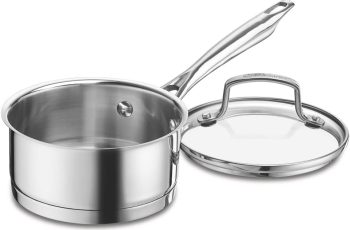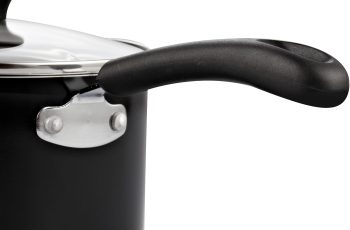Ad Blocker Detected
Our website is made possible by displaying online advertisements to our visitors. Please consider supporting us by disabling your ad blocker.
In today’s world where energy conservation is of paramount importance, pressure cookers have emerged as a valuable tool in reducing energy consumption in the kitchen. By harnessing the power of high-pressure steam, these innovative appliances expedite cooking times, thereby saving both time and energy. This article explores the various ways in which pressure cookers contribute to energy efficiency, outlining their unparalleled ability to cook food swiftly while using significantly less energy than traditional cooking methods. From reducing cooking times by up to 70% to preserving essential nutrients, pressure cookers have proved to be a game-changer for those seeking sustainable and efficient cooking solutions.
Reduced Cooking Time
Faster Cooking Process
One of the main advantages of using a pressure cooker is its ability to significantly reduce cooking time. The sealed environment and high pressure inside the cooker allow for faster heat distribution and penetration into the food. This means that your meals can be cooked faster compared to traditional cooking methods. For example, a dish that may take several hours to cook on a stovetop or in the oven can be cooked in a fraction of the time using a pressure cooker. This time-saving aspect is especially beneficial for individuals with busy schedules who still want to enjoy homemade meals.
Less Time Required for Preheating
In addition to the faster cooking process, pressure cookers also require less time for preheating. Unlike conventional ovens or stovetops, which can take several minutes to reach the desired temperature, pressure cookers reach their optimal cooking temperature much more quickly. As a result, you can start cooking your food almost immediately after turning on the pressure cooker, further reducing the overall cooking time.
Shorter Boiling Periods
Boiling is a commonly used cooking method for various dishes, such as soups, stews, and pasta. However, boiling can be a time-consuming process, especially when dealing with tougher cuts of meat or vegetables that take a while to soften. Pressure cookers excel in shortening the boiling periods by creating a high-pressure environment that significantly increases the boiling point of water. This means that foods can reach their desired tenderness in a fraction of the time compared to traditional boiling methods. The shortened boiling periods not only save time but also help to preserve the nutrients and flavors of the ingredients.
Preservation of Nutrients
Limited Exposure to Heat
One concern when cooking is the loss of nutrients due to prolonged exposure to heat. However, pressure cooking helps to minimize this loss by reducing the overall cooking time. The high pressure and sealed environment of a pressure cooker allow for efficient heat transfer to the food, resulting in shorter cooking times. This reduced exposure to heat helps to preserve the vitamins, minerals, and other essential nutrients present in the ingredients.
Reduced Loss of Water-Soluble Nutrients
Certain nutrients, such as vitamin C and B vitamins, are water-soluble, meaning they can dissolve in water. Traditional cooking methods that involve boiling or steaming can lead to the loss of these water-soluble nutrients as they are leached out into the cooking liquid. However, pressure cooking mitigates this issue by minimizing the amount of cooking liquid required. The reduced liquid volume allows for fewer nutrients to be lost during the cooking process, ensuring that your meals retain their nutritional value.
Retained Color and Texture of Vegetables
When cooking vegetables, maintaining their vibrant color and crisp texture is important not only for presentation but also for taste and nutrition. Pressure cooking helps to retain these qualities by preserving the natural pigments and textures of vegetables. The high-pressure environment within the cooker helps to lock in the moisture and prevent overcooking, resulting in vegetables that are not only visually appealing but also retain their nutrients and flavors.
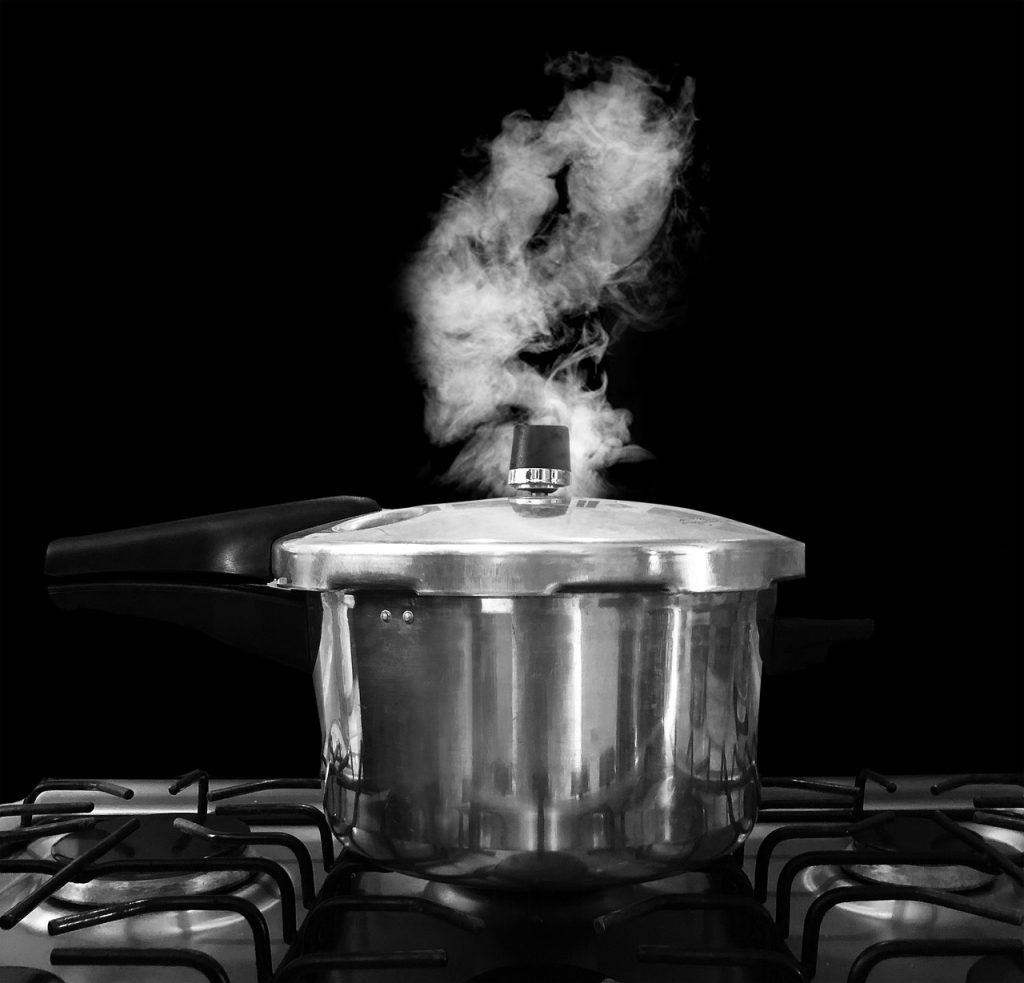
Reduced Energy Consumption
Reduced Cooking Temperature
Pressure cookers operate at higher temperatures compared to traditional cooking methods. The increased pressure within the cooker raises the boiling point of water, allowing food to cook more quickly. As a result, lower cooking temperatures can be used, leading to reduced energy consumption. This lower cooking temperature also contributes to a more energy-efficient cooking process overall.
Less Energy Required for Boiling
Boiling is a common cooking method that requires a significant amount of energy to bring water to its boiling point. With a pressure cooker, the higher boiling point achieved through increased pressure reduces the amount of energy needed to reach and maintain a boiling temperature. This energy-saving aspect not only contributes to lower utility bills but also helps to lessen the overall environmental impact of cooking.
Efficient Steam Retention
One of the key features of a pressure cooker is its ability to retain steam, which is released slowly through the pressure release mechanisms. This efficient steam retention not only helps in the cooking process but also contributes to energy conservation. The trapped steam helps to maintain the internal heat of the pressure cooker, reducing the need for constant additional heating and thereby saving energy.
Energy Conservation
Minimized Heat Loss
Traditional cooking methods often result in a significant amount of heat loss due to open pots, pans, or ovens. This wasted heat contributes to unnecessary energy consumption. However, pressure cookers minimize heat loss by creating a sealed environment that traps heat effectively. The tight-fitting lid and pressure release mechanisms ensure that heat is retained within the cooker, resulting in minimal heat loss and optimized energy conservation.
Less Energy Dissipated to Surrounding Environment
When using conventional cooking methods, the heat generated during cooking is dissipated into the surrounding environment, which can lead to an uncomfortable kitchen temperature and the need for cooling systems. Pressure cookers, on the other hand, confine the heat within the sealed environment, reducing the amount of energy dissipated into the kitchen. This not only helps to maintain a more comfortable cooking environment but also contributes to energy efficiency.
Minimal Use of Additional Appliances
Pressure cookers provide a versatile cooking option and can replace the need for multiple appliances. This consolidated approach to cooking reduces the overall energy consumption associated with using multiple appliances simultaneously. By utilizing a pressure cooker for various cooking methods, such as steaming, braising, and even baking, you can significantly reduce the need for additional appliances, thus promoting energy conservation.
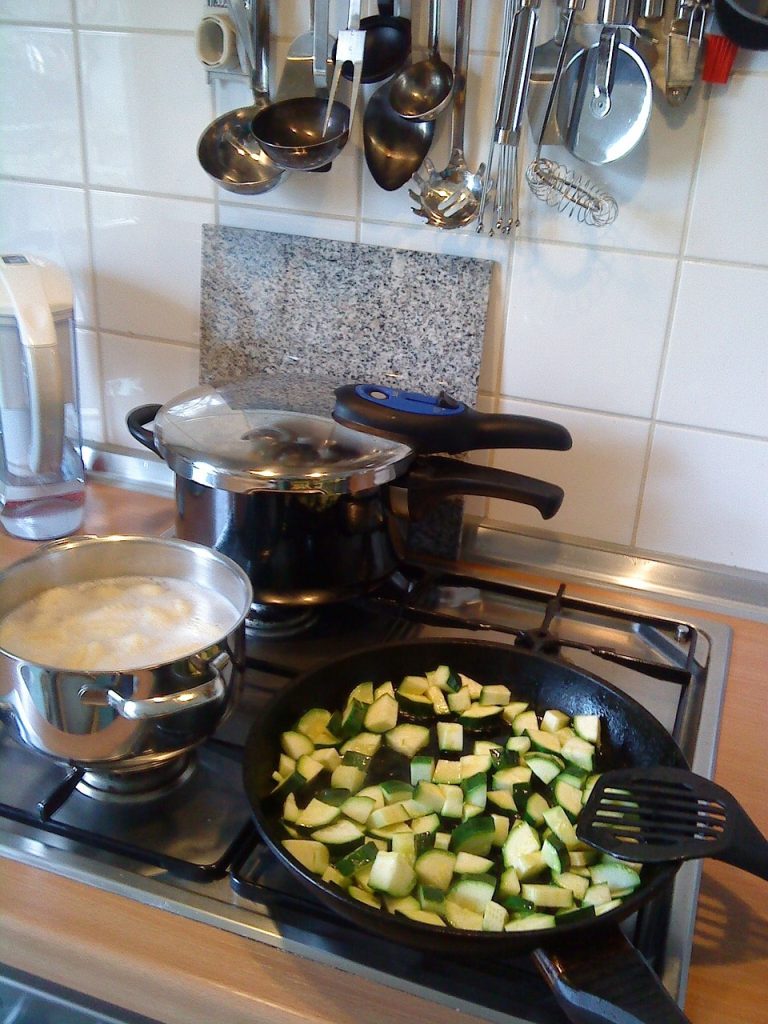
Multi-functional Cooking
One-pot Cooking Method
One of the key advantages of pressure cookers is their ability to facilitate one-pot cooking. With a pressure cooker, you can cook an entire meal in a single pot, which not only saves time and effort but also reduces the number of dishes and utensils to clean afterwards. This multi-functional capability allows for more efficient meal preparation and is particularly beneficial for individuals with limited kitchen space.
Ability to Cook Different Food Types Simultaneously
Pressure cookers offer the flexibility to cook different types of food simultaneously, taking advantage of their stacked cooking design. This means that you can cook various ingredients or even different dishes at the same time, without the risk of flavor transfer. This simultaneous cooking capability further reduces the overall cooking time and increases efficiency in the kitchen.
Consolidation of Appliances
As mentioned earlier, pressure cookers have the ability to replace multiple cooking appliances. By combining various cooking methods into a single appliance, you can declutter your kitchen and reduce the number of appliances taking up valuable counter space. This consolidation not only promotes a more organized and efficient kitchen but also contributes to energy conservation by minimizing the need for multiple appliances.
Built-in Safety Measures
Pressure Release Mechanisms
Pressure cookers are equipped with various safety features to ensure safe operation. One such feature is the pressure release mechanism, which allows for the safe and controlled release of built-up pressure. This mechanism prevents any potential accidents or dangerous situations that may arise from excessive pressure buildup. With these built-in safety measures, you can confidently use a pressure cooker without worrying about any potential mishaps.
Less Risk of Burns or Accidents
Traditional cooking methods often involve open flames, hot surfaces, and boiling liquids, which can increase the risk of burns and accidents in the kitchen. Pressure cookers significantly reduce these risks by containing the cooking process within a sealed environment. The tightly sealed lid prevents any hot liquids or steam from splashing or spilling, minimizing the risk of burns and accidents while handling the cooker or opening it during or after cooking.
Safe Handling of High Temperatures
Pressure cookers operate at high temperatures due to the increased pressure inside the cooker. However, they are designed to safely handle these high temperatures. The materials used in pressure cookers are specifically chosen for their heat resistance and durability. With proper use and maintenance, pressure cookers provide a safe cooking environment, allowing you to handle high temperatures without the risk of damage or injury.
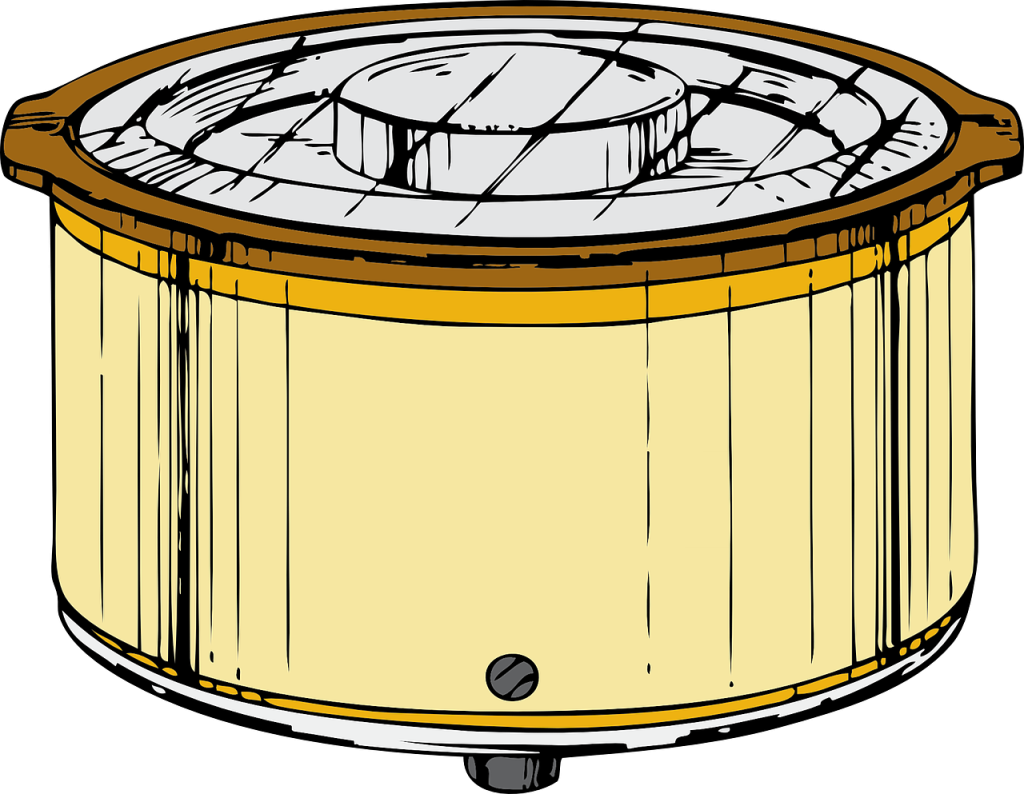
Reuse of Cooking Liquids
Reduced Water Consumption
Traditional cooking methods often require a significant amount of water for boiling or steaming. However, pressure cooking allows for reduced water consumption. The sealed environment within the pressure cooker prevents excessive evaporation, minimizing the need for additional water. This reduced water consumption not only saves resources but also helps to promote a more sustainable kitchen.
Reuse of Flavors and Nutrients
When cooking with a pressure cooker, the cooking liquid is infused with the flavors and nutrients of the ingredients. Instead of discarding this liquid, it can be reused in various ways to enhance the taste and nutrition of other dishes. For example, the cooking liquid from cooking vegetables can be used as a base for soups or sauces, ensuring that no flavors or nutrients go to waste. This practice not only reduces food wastage but also adds depth and complexity to your culinary creations.
Enhanced Taste and Nutrition
The reuse of cooking liquids in pressure cooking not only contributes to sustainability but also enhances the taste and nutrition of your meals. The flavors and nutrients extracted from the ingredients during the cooking process are retained in the cooking liquid. By incorporating this liquid back into your dishes, you can intensify the flavors and boost the nutritional value of your meals. This practice is particularly beneficial for individuals who are conscious of maximizing the taste and health benefits of their cooking.
Versatility and Adaptability
Suitable for Multiple Cooking Methods
Pressure cookers offer a wide range of cooking methods beyond traditional boiling or steaming. From slow cooking to sautéing and even baking, pressure cookers can adapt to different cooking techniques. This versatility allows you to explore various culinary possibilities and expand your repertoire of dishes. Whether you’re preparing tender braised meats or baking a moist and flavorful cake, a pressure cooker can cater to your cooking needs.
Compatible with Different Heat Sources
Another advantage of pressure cookers is their compatibility with different heat sources. They can be used on various stovetops, including gas, electric, or induction, making them suitable for different kitchen setups. This compatibility ensures that you can utilize your pressure cooker regardless of the type of stove you have, further enhancing its adaptability and convenience.
Can Replace Multiple Cooking Appliances
As mentioned earlier, pressure cookers can replace multiple cooking appliances due to their multi-functional capabilities. By being able to perform various cooking methods, a pressure cooker eliminates the need for separate appliances such as slow cookers, rice cookers, or even conventional ovens. This consolidation of appliances not only saves kitchen space but also promotes a more streamlined and efficient cooking process.
Reduced Kitchen Heat
Limited Heat Emitted into the Kitchen
Traditional cooking methods, especially those involving ovens or stovetops, often generate a significant amount of heat that can quickly warm up the kitchen. However, pressure cookers contribute to reduced kitchen heat due to their enclosed cooking environment. The minimal heat emitted into the kitchen during pressure cooking results in a cooler and more comfortable cooking environment, especially during hot summer months.
Less Demand for Cooling Systems
The reduced kitchen heat generated by pressure cookers translates to less demand for cooling systems, such as air conditioners or fans. By minimizing the heat released into the kitchen, pressure cookers contribute to a more energy-efficient cooling process. This reduced cooling demand not only saves energy but also lowers utility costs, making pressure cooking a sustainable and cost-effective cooking solution for your kitchen.
Improved Comfort while Cooking
Cooking in a hot and stuffy kitchen can be uncomfortable, especially during the summer months. Pressure cookers help to alleviate this discomfort by limiting the heat generated during the cooking process. With the reduced heat and improved ventilation, you can enjoy a more comfortable cooking experience, allowing you to focus on preparing delicious meals without feeling overheated or fatigued.
Environmentally Friendly
Lower Carbon Footprint
The increased energy efficiency and reduced energy consumption of pressure cookers contribute to a lower carbon footprint. By utilizing less energy and reducing heat loss, pressure cookers help to minimize greenhouse gas emissions associated with conventional cooking methods. This environmental benefit makes pressure cooking an eco-friendly choice for individuals looking to reduce their impact on the planet.
Reduced Greenhouse Gas Emissions
Traditional cooking methods often require significant amounts of energy, usually sourced from non-renewable fossil fuels. This reliance on fossil fuels contributes to greenhouse gas emissions and climate change. Pressure cookers, with their ability to cook food faster and at lower temperatures, reduce the amount of energy needed and subsequently lower greenhouse gas emissions. By embracing pressure cooking, you can actively contribute to a more sustainable and environmentally conscious lifestyle.
Contribution to Sustainable Living
In today’s society, where sustainability has become a top priority, pressure cookers offer a practical solution for sustainable living. They combine energy efficiency, reduced water consumption, and minimized waste, making them an eco-friendly alternative to conventional cooking methods. By incorporating a pressure cooker into your kitchen, you can take a step towards sustainable living and be part of the global effort to protect our planet.
In conclusion, pressure cookers offer numerous benefits, making them an invaluable addition to any kitchen. From reducing cooking time and preserving nutrients to conserving energy and offering versatility, pressure cookers provide a range of advantages that improve efficiency and promote sustainable living. By embracing pressure cooking, you can not only enjoy delicious and nutritious meals but also contribute to a more eco-friendly and energy-efficient lifestyle. So, why not invest in a pressure cooker today and reap the rewards for years to come?
